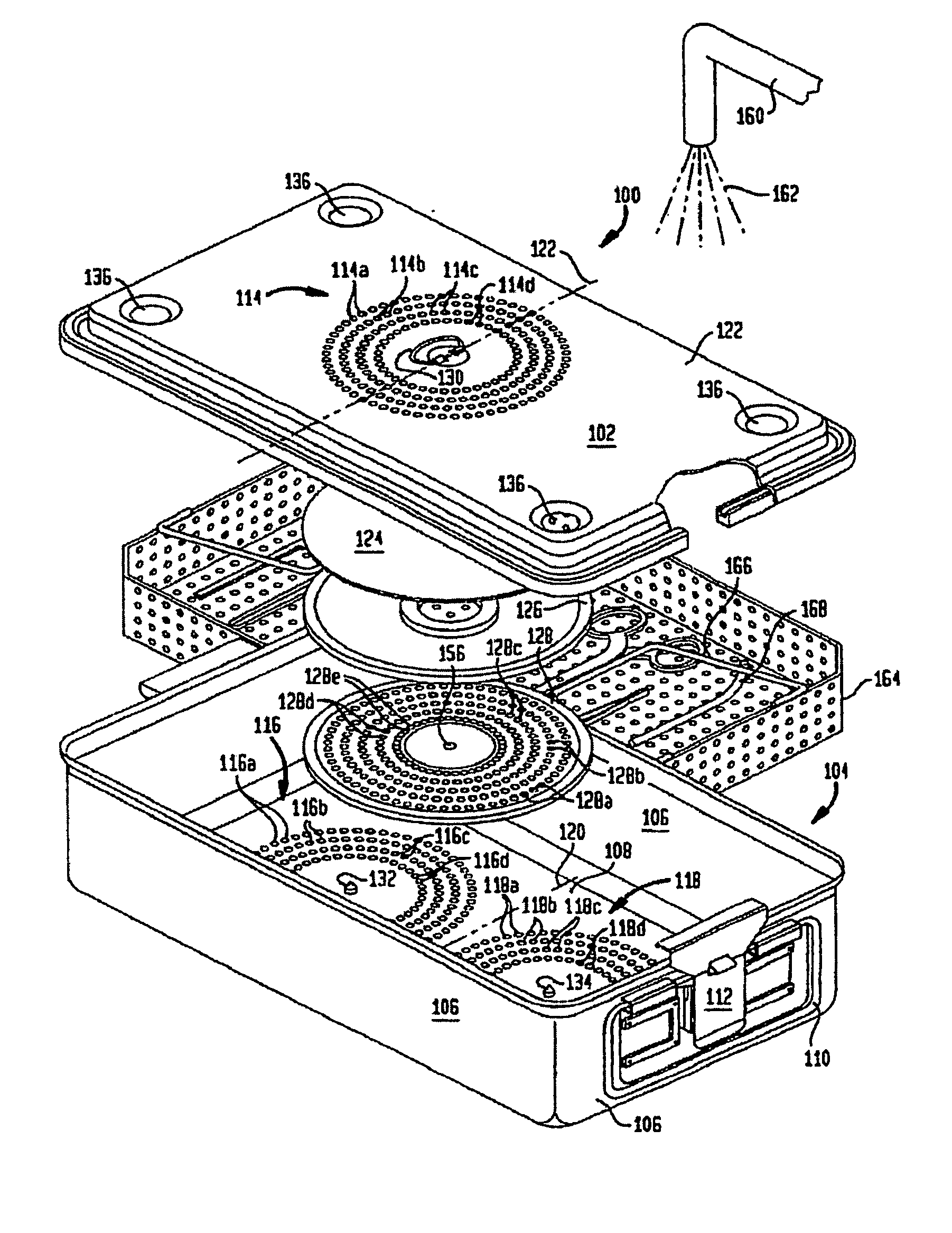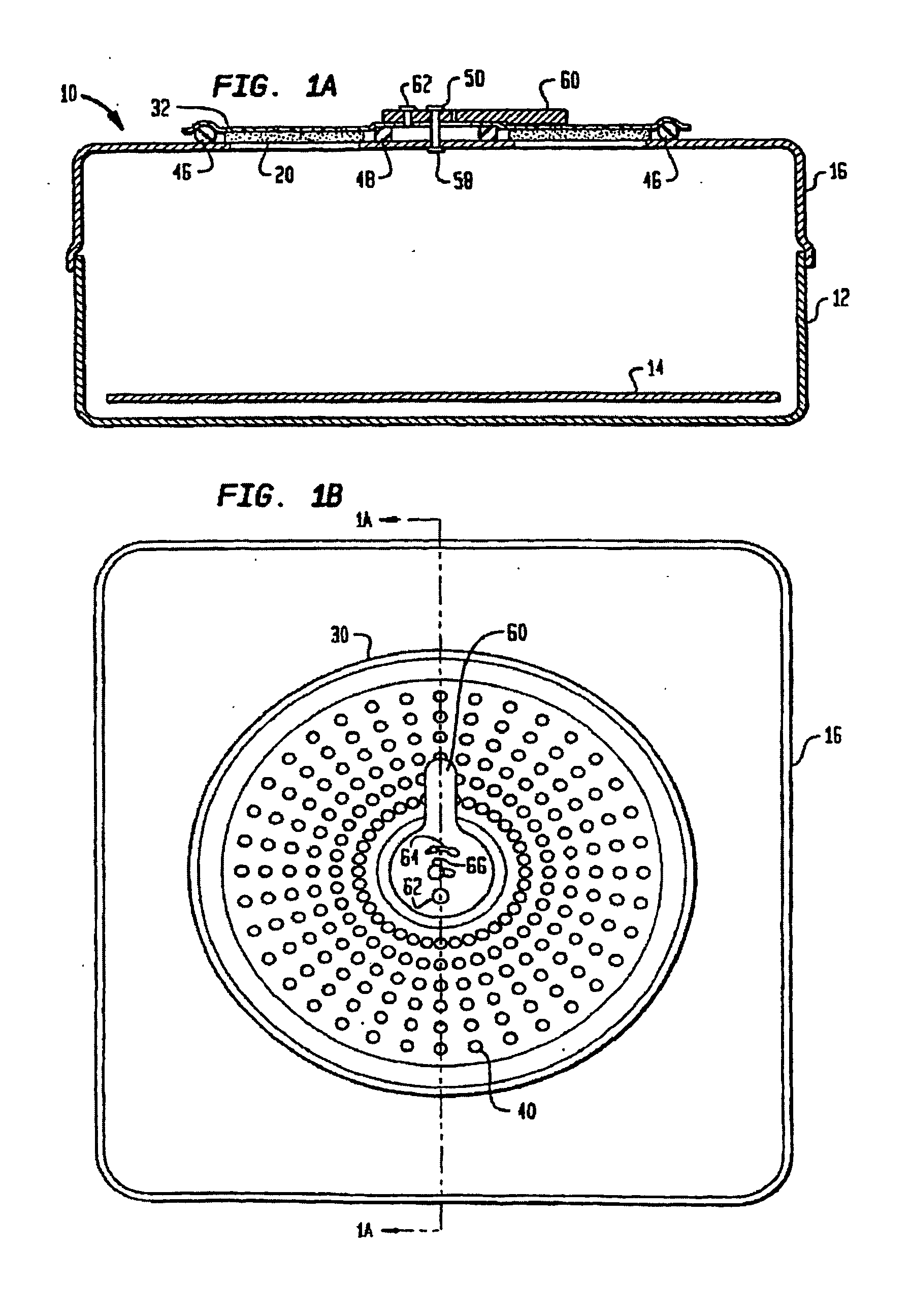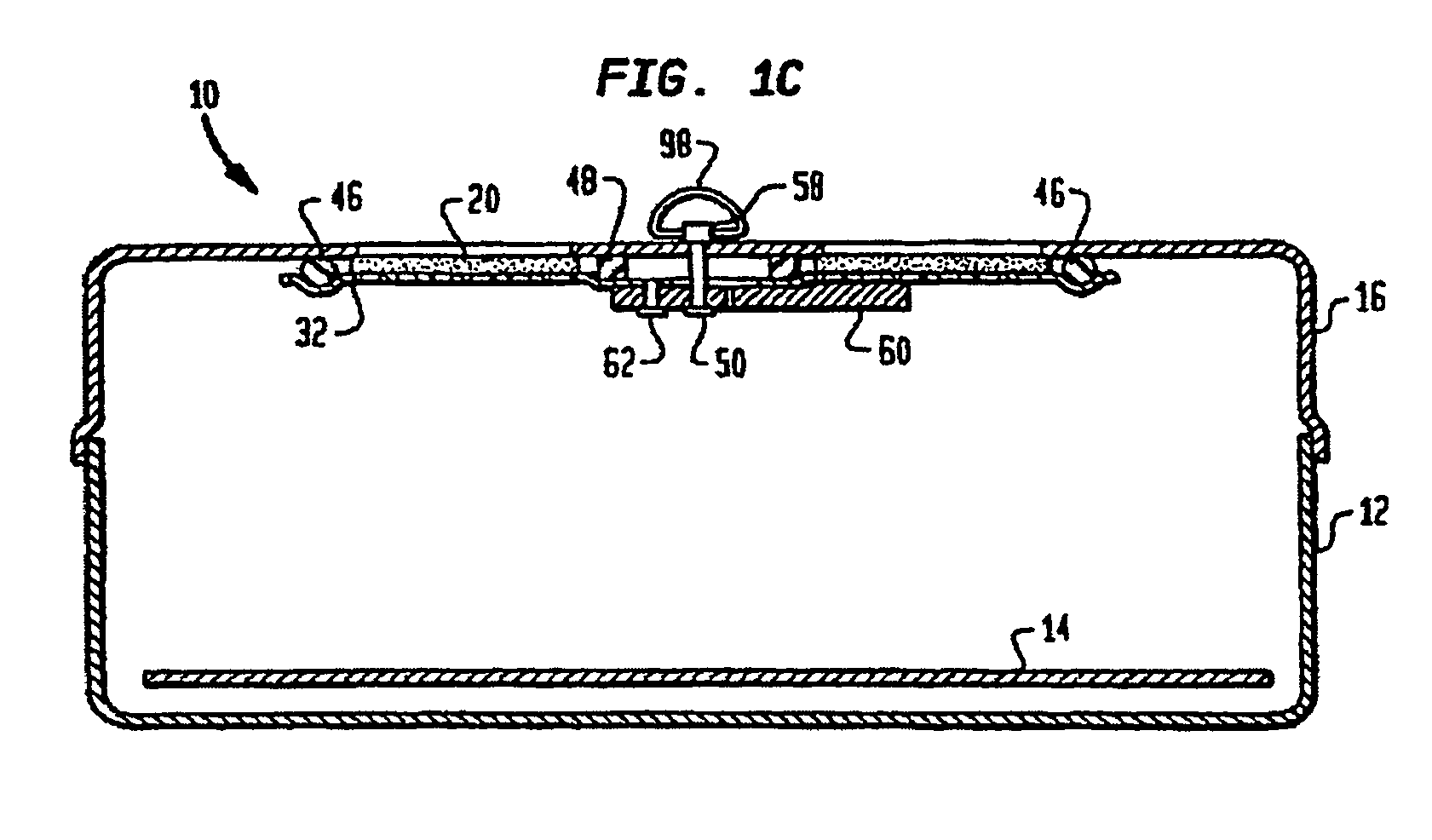Rigid reusable sterilization container with thermostatic valve
a sterilization container and thermostatic valve technology, which is applied in the field of sterilization containers with thermostatic valves, can solve the problems of contaminating items, microorganisms and dust, and standard autoclave methods that take too long to achieve the effect of reducing the risk of contamination
- Summary
- Abstract
- Description
- Claims
- Application Information
AI Technical Summary
Benefits of technology
Problems solved by technology
Method used
Image
Examples
embodiment 100
[0078] An embodiment 100 of the sterilization container apparatus modified for gas plasma is illustrated in the exploded view of FIG. 5, Panel A. The container 100 includes a top or lid 102 that sits on top of a bottom or pan 104. Bottom 104 includes four sidewalls 106 and a bottom or base 108. A pair of wire handles, or bales 110 are located on opposite ends of the bottom portion 104 and are held in place by a pair of lockable latches 112.
[0079] A first set of vent holes 114 is located in top 102. The vent holes 114 are preferably arranged as a group of four concentric circles with holes 114a, 114b, 114c and 114d in each, respectively. In all, the total number of holes may range from 100 to 500 and have a size that ranges in diameter from, but not limited to, about 3 / 16 inches to about 5 / 16 inches. The first set of vent holes 114 is located on the central axis 122 of the short dimension of the lid 102. The first set of vent holes 114 allows the sterilizing medium 162 to pass into t...
embodiment 200
[0086] This second alternative embodiment 200 also provides for improved circulation of the gas plasma through the container so as to contact all the surgical instruments and the corners of the device.
[0087] The preceding embodiments of a sterilization container may also be utilized to extend the length of time that its contents remain sterilized, particularly with use of thermostatic valve assembly 300. Use of thermostatic valve 310 and cover 320 prevents any contaminants from entering the container after it has been sterilized because thermostatic valve 310 closes as the internal temperature of the container declines. Once thermostatic valve 310 closes, the container will maintain its sterility and may be stored until use. The thermostatic valve assembly may also contain a mechanism for recording the opening or closing of the valve, which may provide to the user recorded evidence of proper valve function. In one embodiment, a pin or marker perforates or marks a record material, su...
PUM
| Property | Measurement | Unit |
|---|---|---|
| temperature | aaaaa | aaaaa |
| temperature | aaaaa | aaaaa |
| temperature | aaaaa | aaaaa |
Abstract
Description
Claims
Application Information
 Login to View More
Login to View More - R&D
- Intellectual Property
- Life Sciences
- Materials
- Tech Scout
- Unparalleled Data Quality
- Higher Quality Content
- 60% Fewer Hallucinations
Browse by: Latest US Patents, China's latest patents, Technical Efficacy Thesaurus, Application Domain, Technology Topic, Popular Technical Reports.
© 2025 PatSnap. All rights reserved.Legal|Privacy policy|Modern Slavery Act Transparency Statement|Sitemap|About US| Contact US: help@patsnap.com



